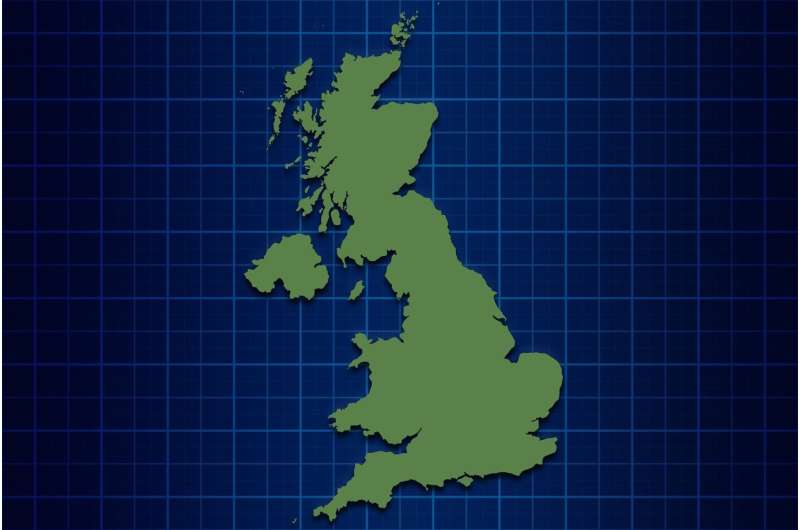Social mobility is influenced by where ancestors lived

There are clear and enduring regional divides across Great Britain, finds an intergenerational assessment of the social mobility of British families between 1851 and 2016, carried out by University College London (UCL) researchers at the Consumer Data Research Centre (CDRC).
Professor Paul Longley, Dr. Justin Van Dijk and Dr. Tian Lan (all of UCL Geography) created GB Names, which allows users to chart exactly where their family group has been based across Britain from 1851 to the present day.
This allows users to profile the social mobility outcomes for their family name, measured in terms of the quality, range and types of neighborhoods in which group members live.
The results greatly extend our understanding of the ways in which social mobility outcomes are shaped by geography—as most conventional studies of social mobility are restricted to measuring changes in occupations over just a single generation.
The researchers have charted the social mobility of more than 13,000 British family groups from 1851 to 2016, by coupling family group data for the entire Victorian population with a present-day population-wide consumer register.
Each family group was given a score summarizing the relative neighborhood deprivation experienced by every adult family group member in Great Britain today, based upon English, Scottish and Welsh Indices of Multiple Deprivation (IMD).
This summary score provides a measure of the relative degree of hardship experienced by the residents of every neighborhood and is strongly indicative of social mobility outcomes, comprising weighted measures of income, employment, health, education, crime, barriers to housing and living environment.
The summary scores for each family group are then checked against every family group member recorded in the 1851 Census and their historical locations are mapped.
In their results, the authors found clear and enduring regional divides in "future deprivation" inherited by the present-day populations of England, Wales, and Scotland from their ancestors.
The work traces the origins of a north-south divide in England, bounded by Devon in the west and a line extending northeastwards between the Severn Estuary and the Wash. It is also suggested that family roots in northern industrial cities are associated with unfavorable outcomes today.
Meanwhile, in Scotland, there is an east-west divide, with eastern areas sharing similarly high levels of hardship as in nineteenth-century industrial centers such as Liverpool and Manchester.
Although migration is shown to partially mitigate against these inequalities, the authors note that most family groups remain concentrated in their ancestral heartlands, and continue to experience the long-term disadvantages bestowed by their geographical location.
Paul Longley said, "We think that this research is important because it shows where, for whom and to what extent geography shapes destiny. It also seems clear that for the many, social mobility should be thought of as a multi-generational outcome."
More information: Paul A. Longley et al, The geography of intergenerational social mobility in Britain, Nature Communications (2021). DOI: 10.1038/s41467-021-26185-z
Journal information: Nature Communications
Provided by University College London




















